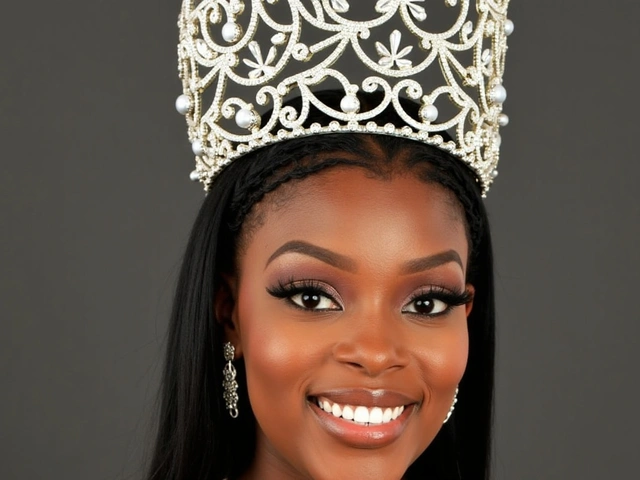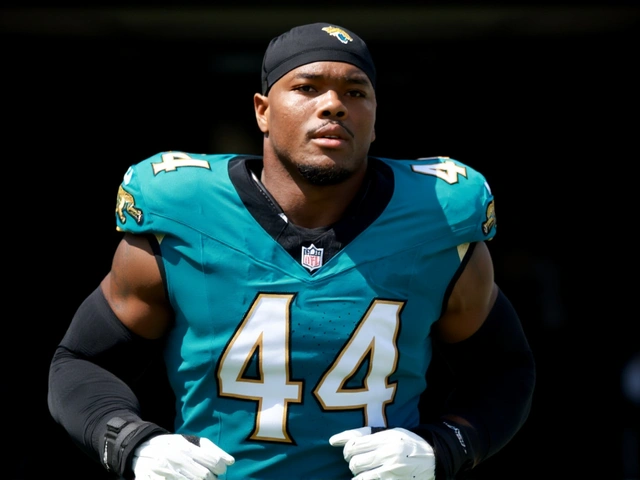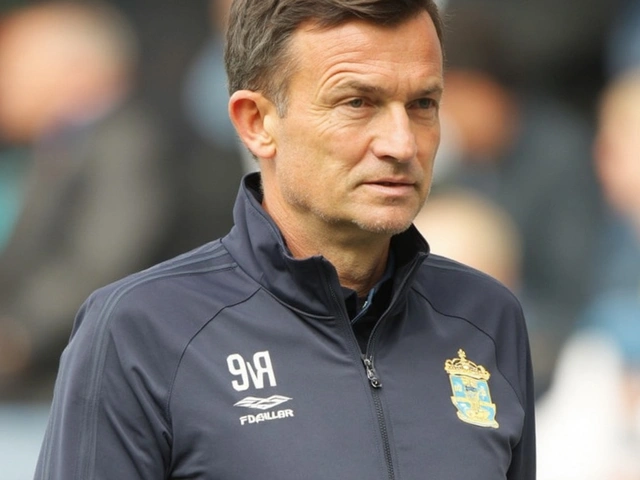When HBO's 'It: Welcome to Derry' premiered on October 22, 2025, audiences expected another monster movie. What they got was a searing, unflinching portrait of American racism — and the chilling realization that the real monster wasn’t lurking in the sewers, but in the hearts of the town’s most respectable citizens.
The Town That Forgot It Wasn’t Safe for Black People
Set in the fictional town of Derry, Maine, in 1962, the series isn’t just a prequel to Stephen King’s horror classic — it’s a historical document disguised as supernatural thriller. The story centers on the Jovan Adepo, a Black airman stationed at Loring Air Force Base, and his wife Taylour Paige, a Civil Rights activist who fled the Jim Crow South only to find Northern racism dressed in polite smiles and silent complicity. Their son, Ronnie Hanlon (Amanda Christine), and his friends — including Latino student Rich (Arian S. Cartaya) and white newcomer Will (Blake James) — begin investigating the disappearances of local children, only to be shut down by authorities who’d rather blame the town’s Black community than confront their own prejudices.At the center of the storm is Hank (Stephen Rider), the Black projectionist at Derry’s only movie theater and Ronnie’s father. When a child vanishes near the theater, Hank becomes the prime suspect — not because of evidence, but because of skin color. The parallels to real-life cases like the 1955 lynching of Emmett Till or the 1964 murders of Chaney, Goodman, and Schwerner aren’t subtle. They’re deliberate.
The Black Spot: A Safe Space Turned Target
One of the series’ most powerful narrative threads is its adaptation of King’s lesser-known interlude, “The Black Spot” — a juke joint established by Black residents of Derry as a refuge from white hostility. The show doesn’t romanticize it. It shows the fear. The constant glances. The way white men in pickup trucks would circle the building at night, not to party, but to intimidate. And then, in a horrifying sequence that echoes real Klan raids, the club is firebombed. No one is arrested. No one is even questioned.HBO’s creative team, led by co-showrunners Brad Caleb Kane and Jason Fuchs, didn’t invent this. They pulled it from King’s 1986 novel, where the Black Spot is described in chilling detail. “You can’t tell the story of a microcosm of America without that element front and center,” Fuchs told Nerdist on October 15, 2025. “The story of America is the story of the Black experience and racism.”
Pennywise Is a Mirror — Not the Monster
It’s signature clown, Bill Skarsgård’s Pennywise, shows up barely in the first five episodes. And that’s the point. The real horror isn’t the clown’s grin. It’s the way a school principal quietly approves of a Black student being denied a science fair prize. It’s the way a police officer ignores a missing child report because “they’re just runaways.” It’s the way the town’s white families send their kids to church on Sunday and burn crosses on Monday.Andy Muschietti, director and co-creator, put it bluntly in an Esquire interview on October 18, 2025: “The line of Pennywise — its influence over the town versus human behavior — is blurred. All these events... might as well happen without the monster.”
That’s the thesis. Pennywise doesn’t create hatred. It feeds on it. It amplifies it. It doesn’t need to be real to destroy lives. The real evil? The systems that let it thrive.
Indigenous Erasure and the Military’s Role
The series doesn’t stop at anti-Black racism. It also examines how Derry’s Indigenous population — largely absent from King’s original text — was displaced by white settlers and the U.S. military. Flashbacks show Native families being pushed off ancestral land to make way for Loring Air Force Base. One scene shows a young Mi’kmaq boy being told, “This isn’t your home anymore,” by a soldier who wears the same uniform as Leroy Hanlon’s commanding officer. It’s a quiet but devastating connection: the same institution that claims to defend freedom is the one that erases entire communities.And then there’s Dick Hallorann (Carl Lumbly), the psychic cook from The Shining, who appears as a fellow serviceman who survived a racist firebombing alongside Leroy. His presence ties It to King’s larger universe — not just as fan service, but as proof that trauma echoes across stories, across towns, across decades.
Was It Too Much? Critics Are Divided
Not everyone loved the ambition. ComicBookClubLive’s October 22 review argued the show “makes gestures at far too many subjects” without fully exploring any. “It’s like the writers got a checklist: racism, homophobia, classism, military abuse — check, check, check. But where’s the heart?”That critique misses the point. This isn’t a story about one kind of oppression. It’s about how they’re all woven together — how a town that tolerates one injustice becomes fertile ground for others. The showrunners didn’t shy away from complexity. They leaned into it.
“If painting a certain kind of reality is considered a woke agenda,” Kane told the Hindustan Times on October 21, 2025, “that’s unfortunate. In America in 1962, you were coming out of segregation... and these were real laws of the land.”
And here’s the uncomfortable truth: many of those laws didn’t disappear. They just changed their uniforms.
What Comes Next?
The first five episodes end with the town’s white elite preparing a public “celebration” to honor the military — while the Hanlons and their allies plan a quiet protest outside the theater. The final shot? Pennywise, barely visible, watching from a reflection in a puddle. But the camera lingers on the faces of the white townspeople — smiling, clapping, oblivious.The next episodes promise deeper dives into the town’s hidden archives, the role of the church in enabling racism, and whether the children’s disappearances are truly supernatural — or just the result of a system that lets Black and brown kids vanish without consequence.
Frequently Asked Questions
Why is racism portrayed as the true horror in 'It: Welcome to Derry'?
The showrunners argue that while Pennywise preys on fear, systemic racism — enforced by institutions, laws, and social silence — destroys lives daily. Unlike the clown, racism doesn’t need to be supernatural to be terrifying. It’s real, persistent, and rooted in history. As co-showrunner Brad Caleb Kane said, “Every horrible event that happens in Derry might as well happen without the monster.”
How accurate is the portrayal of 1962 Maine in the series?
While Derry is fictional, the racial dynamics are grounded in reality. Northern states like Maine didn’t have Jim Crow laws, but de facto segregation, housing discrimination, and police bias were rampant. Historical records show Black families moving to Maine in the 1950s–60s often faced exclusion from neighborhoods, schools, and workplaces — sometimes violently. The series mirrors documented cases like the 1958 race riot in Cicero, Illinois, and the 1963 bombing of a Black church in Birmingham.
Is the Black Spot based on a real place?
Yes. The Black Spot is directly adapted from Stephen King’s novel, but it mirrors real-life Black social spaces like the Dunbar Hotel in Los Angeles, the Royal Peacock in Atlanta, and countless juke joints in the North that served as safe havens from white hostility. These weren’t just clubs — they were community centers, political meeting halls, and sanctuaries.
Why does Pennywise appear so little in the first episodes?
The creators intentionally minimize Pennywise to shift focus to human evil. The monster is a symbol — a manifestation of collective fear and hatred. By making him a background presence, the show forces viewers to confront the real villains: the teachers who look away, the cops who arrest the wrong man, the neighbors who say nothing. The horror isn’t in the clown — it’s in the silence.
How does Dick Hallorann connect to 'The Shining'?
Hallorann’s appearance as a fellow soldier who survived a racist firebombing ties the supernatural trauma of It to the real-world trauma of The Shining. Both stories explore how isolation, abuse, and systemic neglect breed monsters — whether they’re ghosts, clowns, or violent fathers. His survival also suggests that some people carry trauma across King’s universe, making his presence a bridge between horror stories rooted in American history.
What’s the significance of the Indigenous displacement storyline?
It expands the show’s critique beyond anti-Black racism to show how colonialism and militarization erased multiple communities in Derry. The U.S. military’s expansion into Maine in the 1950s displaced Native families — a real historical pattern seen in places like the Pine Ridge Reservation and the Penobscot Nation. This subplot reminds viewers that Derry’s evil isn’t just about race — it’s about power, land, and who gets to be considered “American.”






Suman Sourav Prasad
October 29, 2025 at 14:51
Wow. This isn't just a show-it's a mirror held up to every town, every school, every police station that still pretends it's not broken. The way they showed Hank being blamed just because he was Black? That’s not fiction. That’s Tuesday in 2024. And the Black Spot? That’s every community center, every backyard barbecue, every church basement where Black folks tried to breathe without fear. No clown needed.